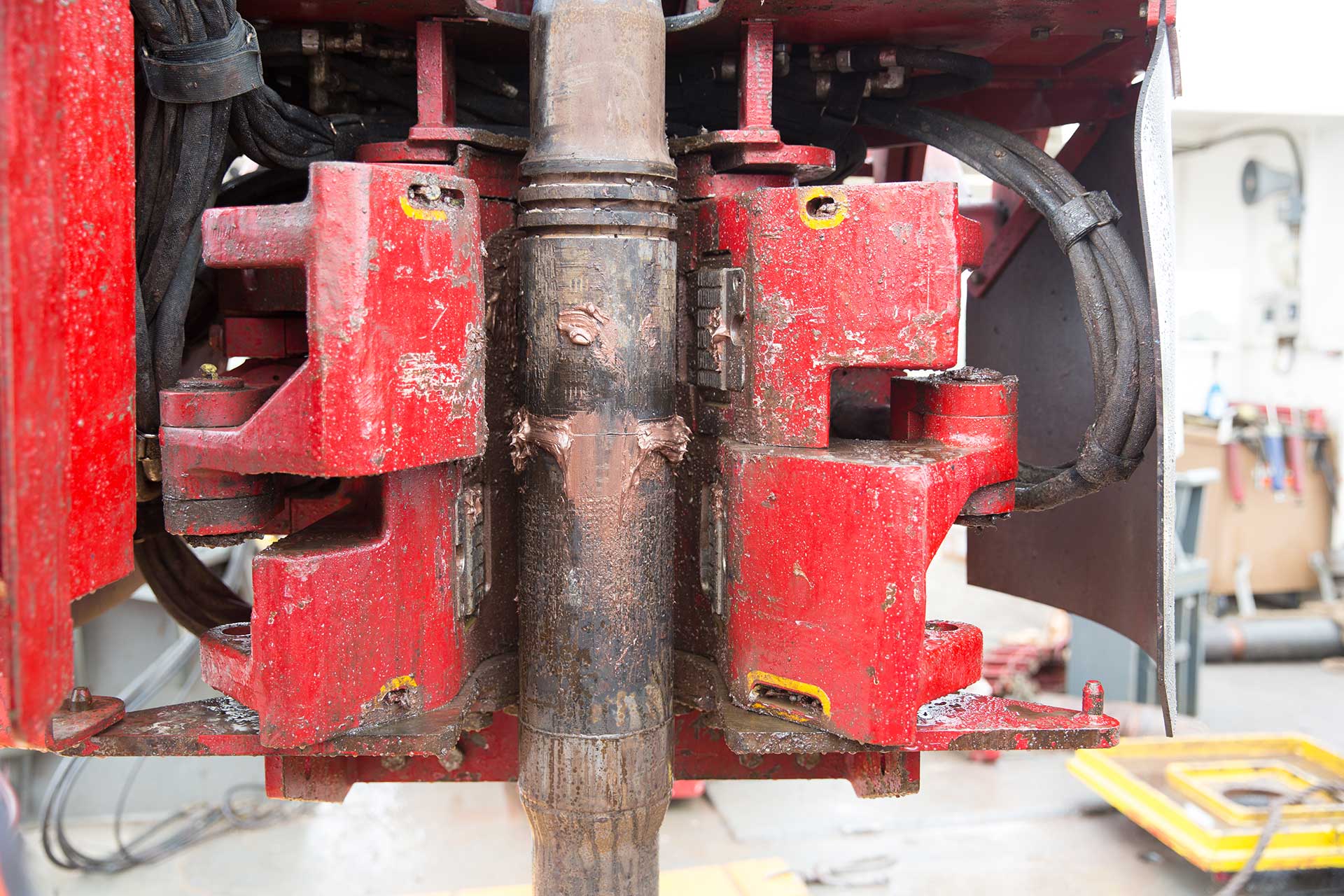Making-Up Connections
Recommendations for making-up drill stem components
Description
Specifications
MYNOV is a single sign-on solution.
Access multiple NOV applications and services with one login.
Recommendations for making-up drill stem components

 Description
Description Specifications
Specifications| Connection | Minimum clamp distance between box external shoulder and top of lower jaw die |
API | As per API |
GPDS™ uGPDS™ | ½ in. |
Delta™ | ½ in. |
HT™ | 2 in. |
XT™ XTF™ XT-M™ uXT™ | 2 in. |
TT™ TT-M™ TF-M™ | 2 in. |
CT-M™ | 2 in. |
GT-M™ | 2 in. |